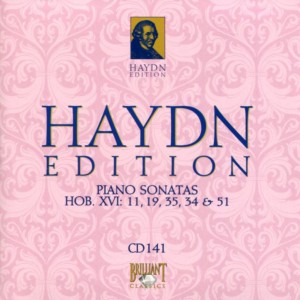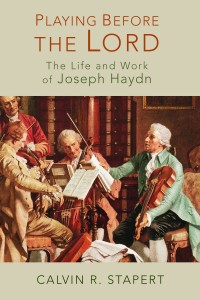 Back to Panera this morning for some Light Roast coffee.
Back to Panera this morning for some Light Roast coffee.
It’s only $2 for a mug of it.
Yet, that $2 buys me a half day of sitting here drinking coffee, watching people, and using electricity from their outlets.
It’s a great gig, if you think about it.
And I don’t, really. I have bigger problems to fry.
But you can think about it, if you wish.
Today’s performances once again featured Stanley Hoogland on fortepiano.
However, unlike yesterday’s performance, today’s began more subdued. Less jovial. More melancholy. At least, the tempi was slower on most of these performances.
Movement I (“Moderato”) of t he second piano sonata (Piano Sonata in D HOB XVI: 19) reminded me of Chico Marx playing one of his signature piano pieces in the classic Marx Brothers movie Animal Crackers.
Don’t ask me why.
Because I’ll tell you anyway.
The notes and style between 1:44 and 1:50 are vaguely reminiscent of some of what Chico is playing in this clip:
It’s funny how my mind connects dots and/or makes associations.
Most people probably wouldn’t be reminded of Chico Marx as they listen to Stanley Hoogland.
Oh, well.
As I wrote, I have bigger problems to fry.
Movement III (“Finale: Allegro assai”) from Piano Sonata in D HOB XVI: 19 was a hoot, as was Movement I (“Allegro”) from the next composition, Piano Sonata in C HOB XVI: 35.
There seems to be a lot of trills and syncopation in today’s piano sonatas.
Actually, now that I think of it, Haydn’s piano sonatas are rife with trills and syncopation. When he gets rockin’ with his fast-tempo pieces, there’s a lot of flying fingers to be reckoned with.
And I reckon the performers have to be exceptional to be able to pull it off.
Now’s a good time to quote again from  Playing Before the Lord: The Life and Work of Joseph Haydn by Calvin R. Stapert, professor emeritus of music at Calvin College.
Playing Before the Lord: The Life and Work of Joseph Haydn by Calvin R. Stapert, professor emeritus of music at Calvin College.
Stapert writes of Haydn’s keyboard playing,
Haydn’s early keyboard works are decidedly galant in their tunefulness and easy accessibility. They are ideal for their intended use as light entertainment or pedagogical material for his students. Most of the players were women, the wives and daughters of noble gentlemen. They generally had an abundance of free time, which they filled by cultivating “accomplishments” such as needlework, making artificial flowers, cutting out paper ornaments, and framing pictures. Keyboard playing was highly valued as a female “accomplishment.”
That explains why a lot of Haydn’s keyboard works don’t sound incredibly complicated. They weren’t written, as Bach might have, for a virtuoso performer in mind.
Still, I find these pieces, in large part, quite nice, albeit not terribly complex.
Here’s what I listened to today:
Haydn Piano Sonata in G HOB XVI: 11 (Composed before 1766)
Haydn Piano Sonata in D HOB XVI: 19 (Composed 1767)
Haydn Piano Sonata in C HOB XVI: 35 (Composed 1777 to 1779)
Haydn Piano Sonata in E Minor HOB XVI: 34 (Composed 1781)
Haydn Piano Sonata in D HOB XVI: 51 (Composed 1794)
I provided the first piano sonata for your listening enjoyment. I’m certain if you visit YouTube you can find the rest of what I listened to today, should you wish to do so.
